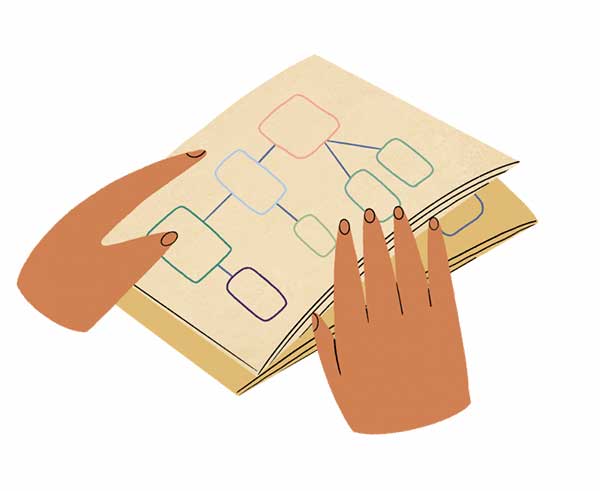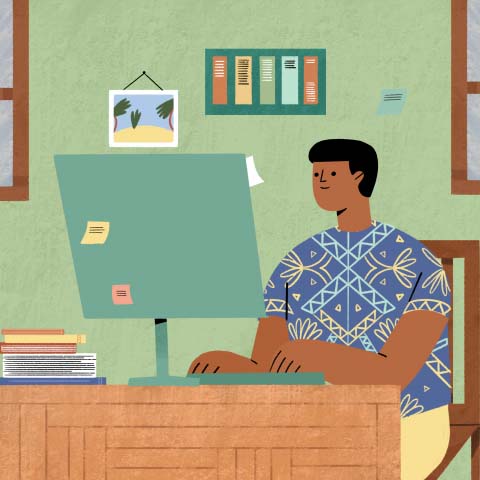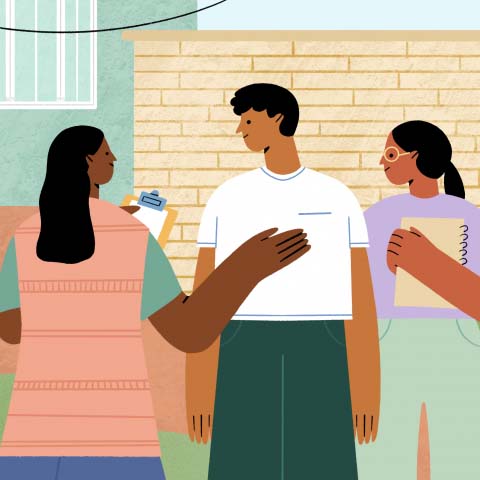Needs Assessment case study: Tostan
A needs assessment helped the nonprofit Tostan strengthen a COVID-19 information dissemination program in four West African countries.
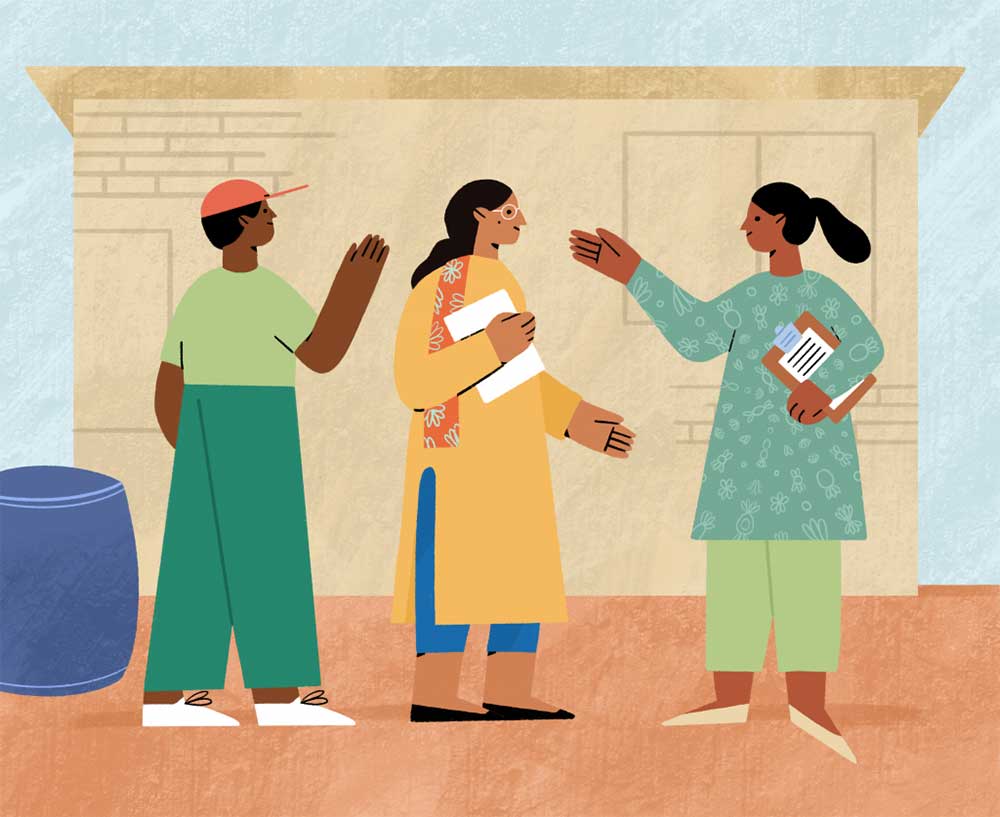
Background
Tostan is a Senegal-based nonprofit that works to empower communities to lead their own development, with a vision of dignity for all. It has deep community ties in several West African countries and at the start of the COVID-19 pandemic had active programs in Guinea, Guinea-Bissau, Mali, Senegal, and The Gambia.
In April 2020, as COVID-19 cases rose, Tostan launched campaigns to reach these communities with messaging in local languages from trusted sources. Throughout the early months of the pandemic and associated lock-downs, Tostan volunteers, staff, and partners shared public health messages via radio, WhatsApp videos, printed brochures, phone calls and visits to communities. Through these messages, Tostan aimed to spread information, encourage preventive practices, and facilitate the flow of support requests to local governments and nonprofits. Tostan’s embedded staff and community connections helped them design messages to fit the local context, speaking to communities’ values and in local languages.
Decision
Tostan sought to identify which COVID-19 knowledge, attitudes, and practices (KAP) needed to be reinforced more strongly in these communities. If current KAP were not motivating or enabling communities to protect themselves, Tostan would refocus its messaging to close these identified gaps. If key KAP were already strong, Tostan could redirect resources towards more pressing issues.
To inform Tostan’s decision-making, IDinsight conducted a needs assessment among Tostan community members in Guinea, Guinea-Bissau, Mali, and Senegal.
Approach
Defining the goals of the needs assessment
IDinsight and the Tostan team co-developed an informal theory of change for Tostan’s messaging program. We outlined the KAP thought to offer the most protection to community health, the factors that might facilitate or obstruct the adoption of these KAP, and ways Tostan’s communications could promote these KAP.
Deciding to conduct a phone survey
Due to the pandemic, it was not safe to conduct in-person surveys. We leveraged Tostan’s database of contacts for a phone survey.
Choosing respondents for the survey
- We randomly selected 161 villages communities from a list of all villages where Tostan worked.
- We built a list of people we could survey. This included Tostan’s direct contacts within the communities that had been randomly selected, but we also asked Tostan’s contacts to suggest local leaders (such as village leaders and religious leaders) and health workers we could speak to. Our goal was to learn as much as possible about KAP among community leaders who were likely to a) be the most knowledgeable about COVID-19 and mitigation methods and b) be able to influence others in the community.
Survey
We conducted 30-minute structured phone surveys with the people on our list. In these surveys, we asked respondents about:
- The challenges they were facing due to the pandemic
- How they got information about COVID-19
- Their knowledge of COVID-19, such as symptoms and transmission pathways
- The practices they were following at the individual-, household-, and village- level to protect themselves
- Attitudes and response toward COVID-19
- Recall of COVID-19 messaging they had received from various sources, including Tostan
Analysis
We calculated summary statistics across all the questions, and presented these as graphs. Here are two illustrative examples:
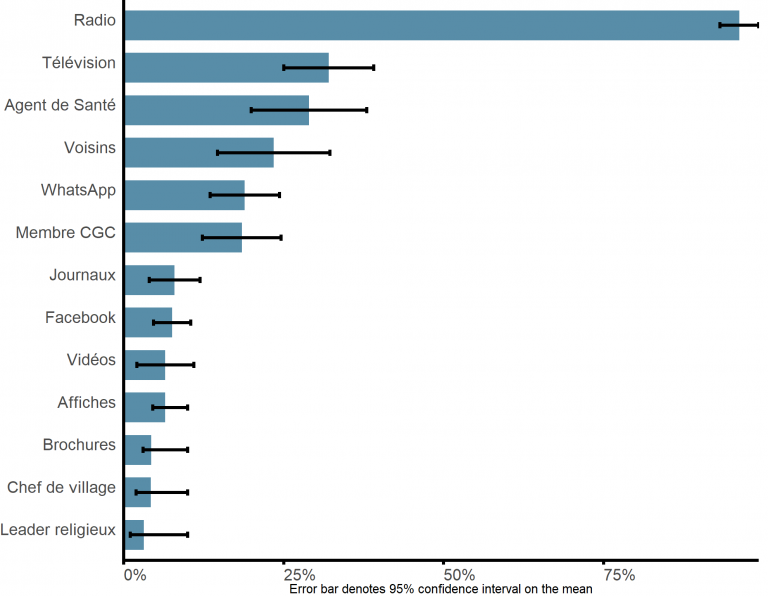
Sources of information about COVID-19
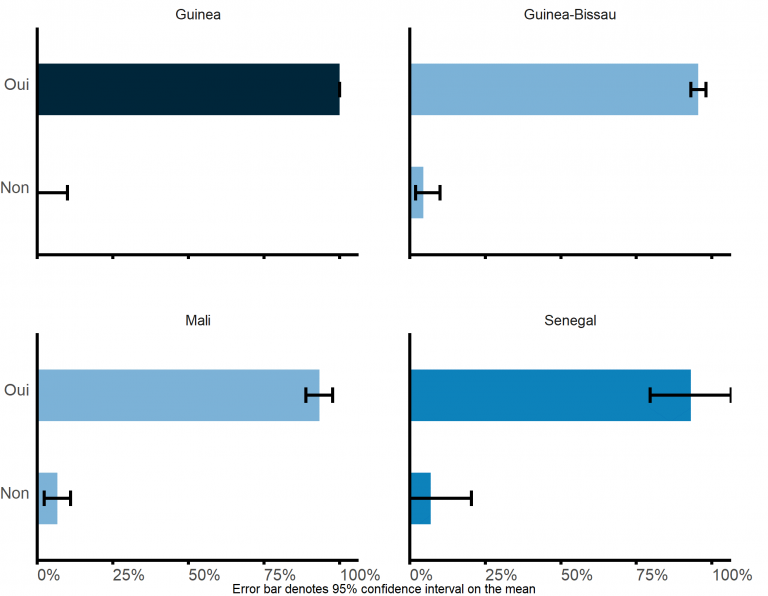
The percentage of people who said Yes (Oui)/No (Non) when asked: “Are you wearing any protection whenever you are going out of the house?”
Interpretation
Since we sampled villages randomly, our results represent the average Tostan village. However, the respondents from these villages were not chosen at random, so we could not say that the results represented the average resident. Instead, we interpreted the results to estimate an upper-bound for the village average, with the assumption that Tostan contacts would have better-than-average KAP due to their training and networks. Thus, if the result is low, it indicates that the upper-bound for the village is low – which means that KAP needs reinforcement.
Results
- We confirmed that radio broadcasts were the primary source of COVID-19 information
- We identified the challenges these communities were facing, such as inadequate access to soap and/or water for handwashing and difficulty obtaining enough food.
- We identified specific COVID-19 related knowledge and practices that needed to be reinforced
This included awareness that people who were asymptomatic could still be contagious, and the importance of implementing public health controls at markets. Tostan began emphasizing these specific knowledge and practices in its communication to communities.
Guide
Not sure where to go from here? Use our guide to frame a question and match it to the right method.
Needs assessment?
Find out more about needs assessments and how to conduct one.
Create your theory of change
Use our drag-and-drop tool to create a theory of change diagram

